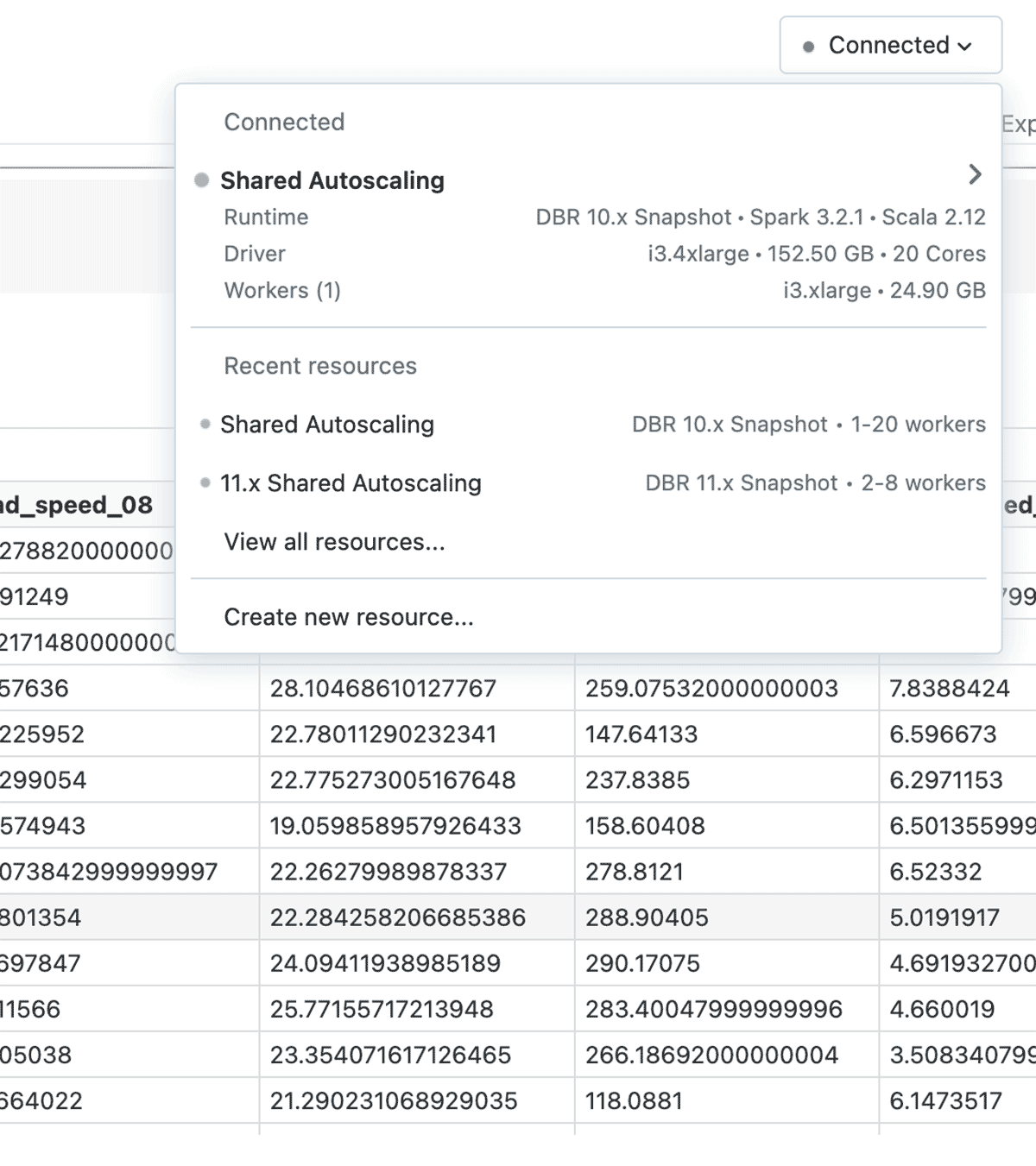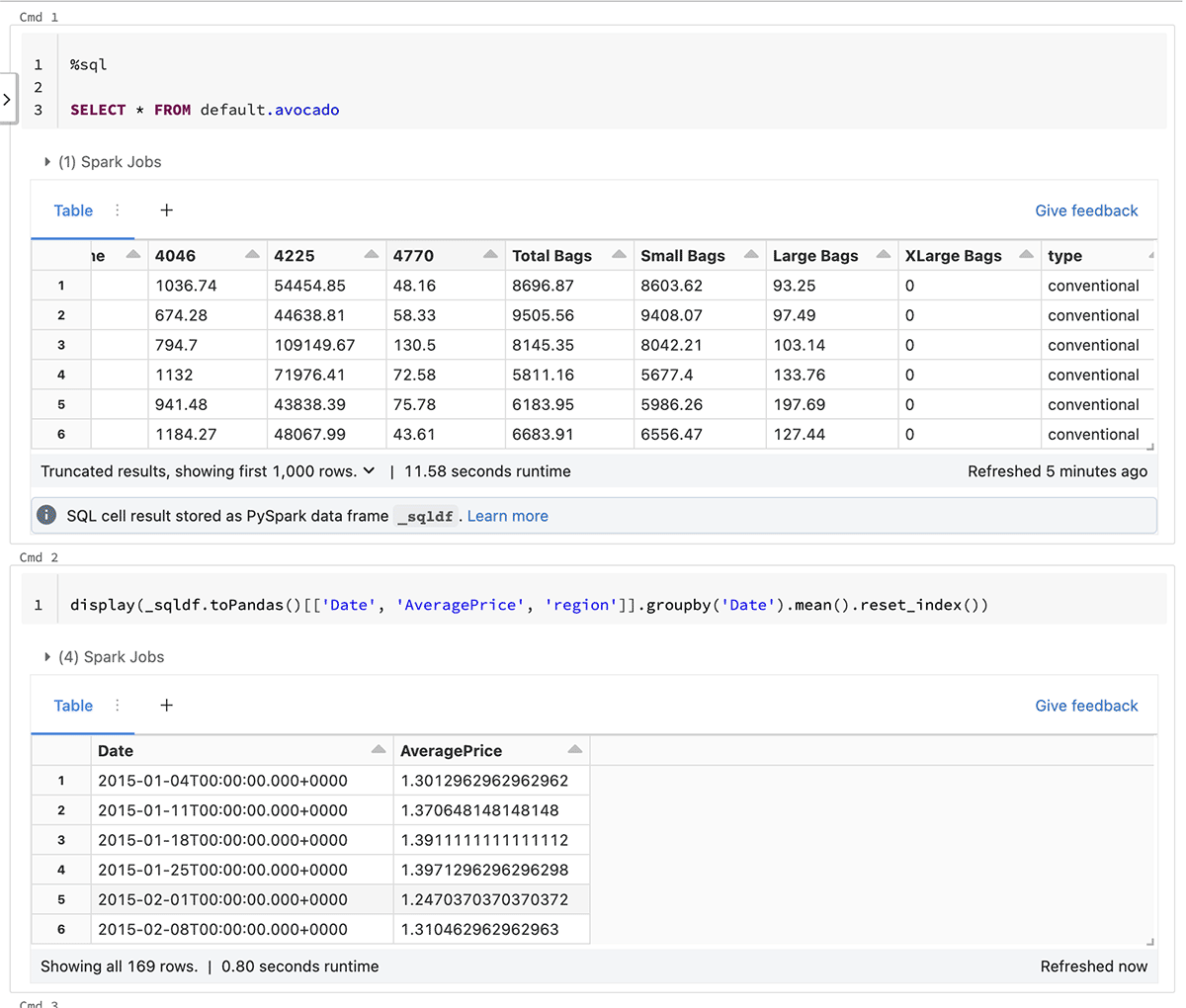What's New With Databricks Notebooks at the Data & AI Summit
Databricks Notebooks

At Databricks, we are continually evolving the development experience to accelerate the path from data to insights. Today we’re excited to announce further improvements to the Databricks Notebook ahead of the Data + AI Summit happening June 27-30 (register here!). Join us to see how we’re making the development experience even better with simplified compute, deeper connections between SQL and Python, embracing the Jupyter ecosystem, new low-code exploratory data analysis tools, and better access tracking with audit logs.
Integrated Compute Management in the Notebook
We’ve rebuilt the Notebook’s UI for choosing compute resources from the ground up, designing it so you spend less time finding the right resource and more time on your work. Your most recently used compute resources are now at your fingertips, and when you need a new resource, you can create it with only a few clicks without ever having to leave the Notebook.

Grab and go compute makes it easier to focus on the task at hand
Easily take your exploration from SQL to Python
Python and SQL are the two most popular languages in Databricks notebooks, and users frequently load data with SQL before diving deeper with Python. You can now use Python to explore SQL cell results in Python notebooks. You'll be able to retrieve the results of SQL cells as Python dataframes without the need to manually convert between the two languages.

Turn your SQL results into Python dataframes automatically and save the hassle of writing extra code
Introducing Ipywidgets Support to Python Notebooks
With ipywidgets support (currently in public preview) on top of the IPython kernel, you can make your notebooks interactive with rich controls and over 30 distinct UI elements. This brings the power of the Jupyter ecosystem to Databricks notebooks.
Add great visuals and interactivity to your notebook with over 30 flexible widgets
UI-Based Data Exploration with Bamboolib
Prepare, transform, visualize, and explore your data using a simple, user-friendly interface! With Bamboolib, an extendable GUI integrated into your notebook, you save time with no-code data exploration but have access to the generated code needed to replicate and customize the results. This makes it easier for citizen data scientists and domain experts to manipulate their data with Python.
Enjoy the ease of low-code data exploration through a user friendly yet powerful UI
Improved Compliance with Notebook Cell Execution Audit Logs
All notebook access and user revisions are associated with user identities, allowing security administrators to easily audit actions performed on your workspace. We've taken transparency a step further by logging execution of individual cells within Databricks notebooks. This improves access controls and identity management by allowing administrators to always know who did what, when, and where.

Improve your audit capabilities by tracking down to the cell execution level within the Databricks notebook
Learn more:
- Register for Data + AI Summit 2022:
https://www.databricks.com/dataaisummit/ - General Notebooks Knowledge:
https://docs.databricks.com/notebooks/index.html - Best Software Practices with Notebooks:
https://docs.databricks.com/notebooks/best-practices.html
Never miss a Databricks post
What's next?

Product
November 21, 2024/3 min read
